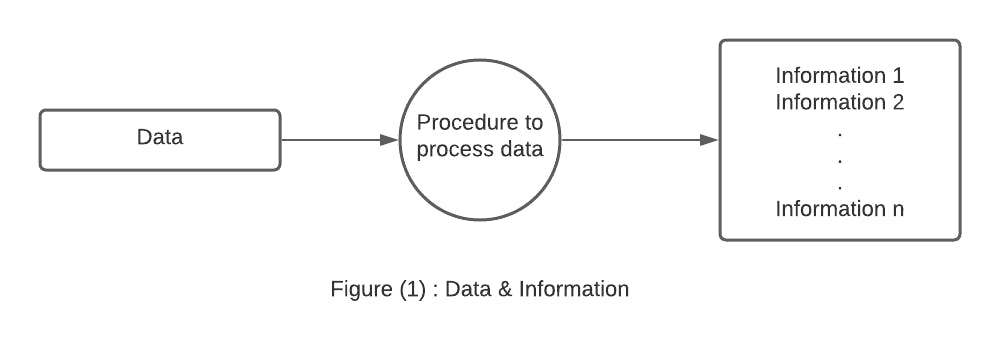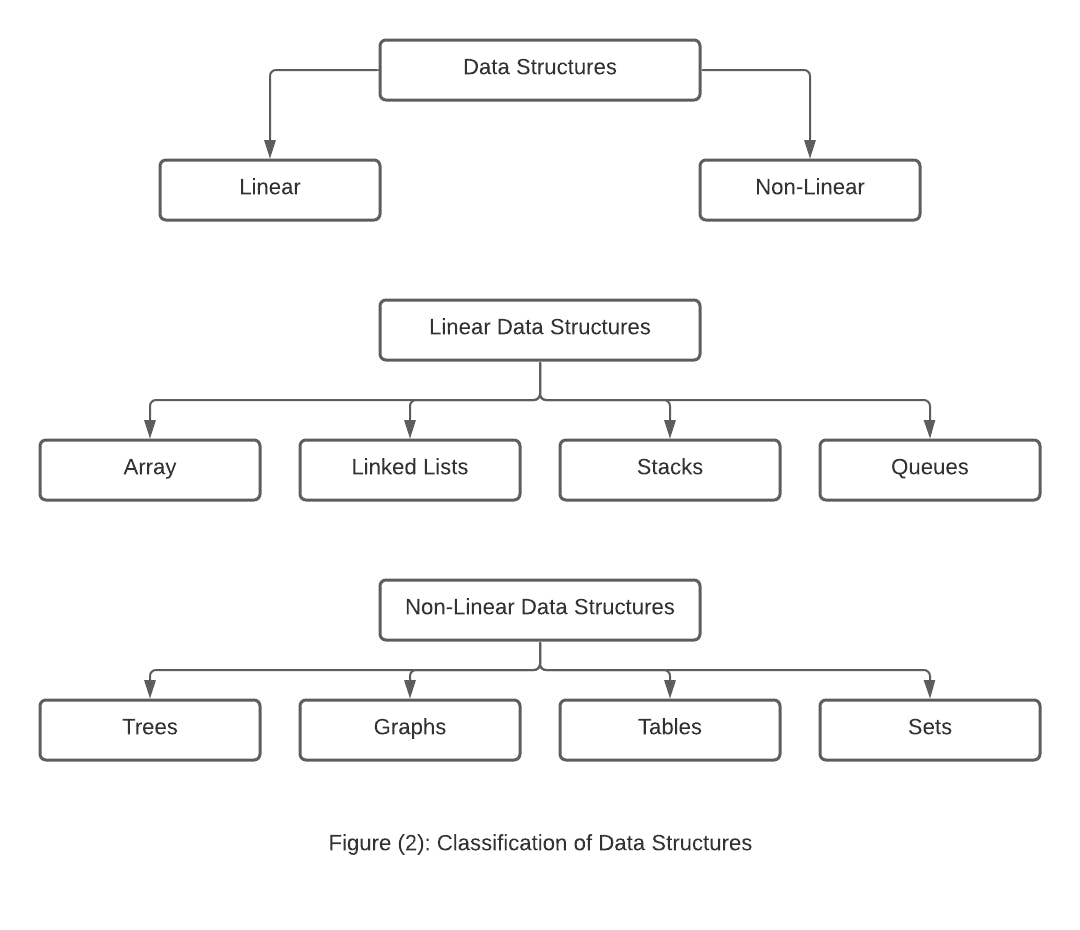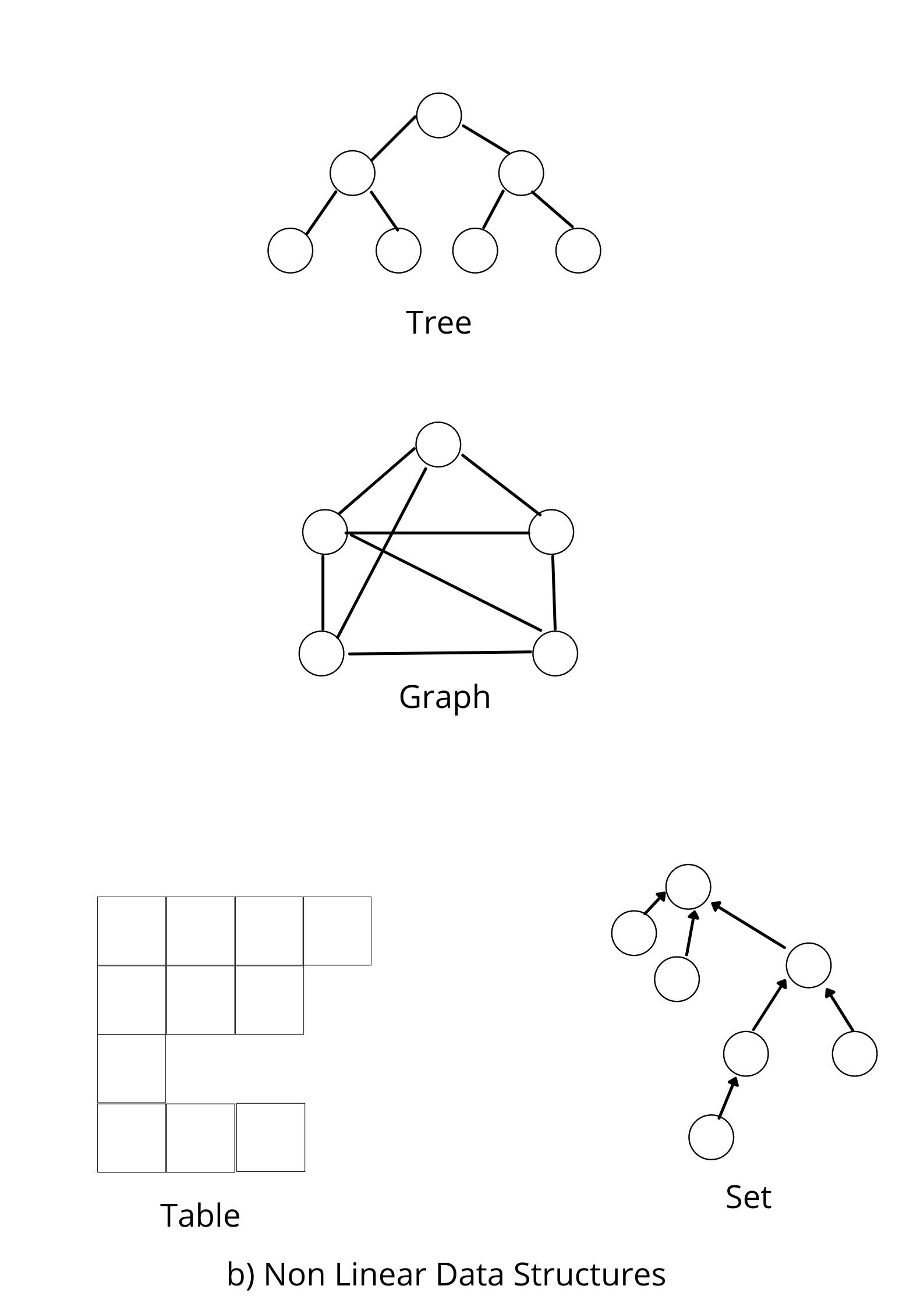DEFINITIONS
Data
Data means a value or a set of values. For example :
1. 20
2. Name
3. 12/2/21
4. 1,2,3,4,5
Entity
An entity is one that has certain attributes and which may have assigned values. For example, an employee in an organization is an entity. Attributes can be - Name, DOB, Designation, etc...
Each attribute of an entity set has a range of values, and this range is called the domain of the attributes. So, the domain is a set of all possible values that can be assigned to a particular attribute.
Information
Information can be defined as meaningful data or processed data. To get all information from given set of data, we need to define certain processes and then apply corresponding process on the data as shown in below figure (1).

Data Type
A data type is a term which refers to the kind of data that may appear in a computation. Data can be Number, Date, Alphanumeric, Graphics, String, Image, Array of intergers, Boolean etc...
1. Built-in Data Type : In every programming language, there is a set of data types called built-in data types. For example in C we have int, float, char, double, enum etc...
2. Abstract Data Type : Programmer implements their own data. The programmer has to specify how to store a value for that data, amount of memory required to store, etc... So, Programmer's own data type is called abstract data type.
CONCEPTS OF DATA STRUCTURES :
As we all know that a digital computer can only manipulate Primitive data (Binary data) that is, data in the terms of 0's and 1's. But in real life application there are various kinds of data. So manipulation of real life data requires the following tasks:
1. Storage representation of user data : User data should be stored in such a way that the computer can understand it.
2. Retrieval of stored data : Data stored in computer should be retrieved in such a way that the user can understand it.
3. Transformation of user data: Various operation which requires to be performed on user data so that it can be tranformed from one form to another.
Set of terms used in Data Structures :
1. Domain (D) : This is the range of values that the data may have. This domain is also termed data object.
2. Function (F) : This is the set of operation which may legally be applied to elements of the data object.
3. Axioms (A) : This is the set of rules with which the different operations belonging to function can actually be implemented.
What is Data Structure?
A Data Structure is a triplet where D is a set of data object, F is a set of functions and A is set of rules to implement the functions.
OVERVIEW OF DATA STRUCTURES

In the above figure (2) you can see that the Data Structures are divided into two types : Linear and Non-Linear. In Linear Data Structures all the elements form a sequence or maintain a linear ordering whereas in Non-Linear Data Structures there is no sequence in elements that is, it does not maintain a linear ordering.


